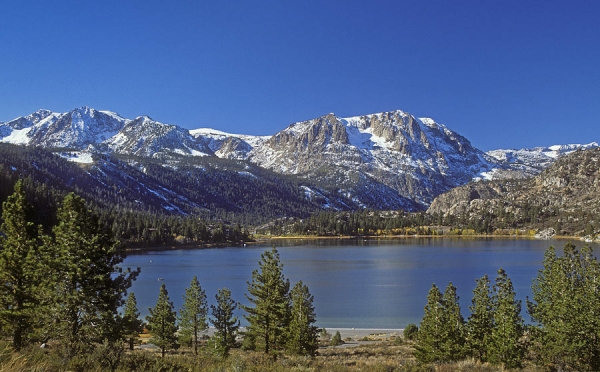Climate change and mountains topic of global meeting

An ancient forest of mature pine trees, standing upright under 100 feet of water in a small lake in the Tahoe Basin, helps scientists as they study how changing climate can affect mountain environments and the communities in them. The trees, discovered and studied by a University of Nevada, Reno researcher, are remnants of a 200-year medieval drought.
The site is a stop on one of the field trips of a four-day international conference on mountain observatories that was held at the University of Nevada, Reno on Wednesday through Saturday.
More than 170 scientists from Asia, Europe, Africa, South America and the United States came to Reno to discuss global monitoring systems for mountain environments, with the goal to move toward a more comprehensive global mountain observation network by strengthening the ties between existing observation systems.
"The importance of mountain environment systems drives our economy, here along the Truckee River from Lake Tahoe to Pyramid Lake, just like it does in communities around the world," said Kevin Carman, provost and professor of biology at the University of Nevada, Reno, in his welcoming remarks at the conference. "Monitoring the snowpack, for example, is imperative to knowing how much water we have, which is true in all mountain areas all around the world."
One could say environmental monitoring on a large scale started in 1905, on the flanks of 10,700-foot Mount Rose overlooking Lake Tahoe and Reno, with the first snow survey system by University of Nevada, Reno professor James Church. He was interested in determining how much snow runoff would supply water to the Reno and Northern Nevada area. The survey extended across the Sierra, which now helps forecast water supply for California, including domestic uses and the important agricultural industry in California's Central Valley.
Church's methods were adopted around the world, and he himself set up monitoring systems in the Andes, the Himalayan Mountains and Europe.
"The snow observatory and surveys on Mount Rose still continue and are part of a tradition of field observatories here in Nevada," said Franco Biondi, professor of geography at the UNR and co-organizer for the conference. "Methods developed by Church are still used today in snow surveying and field observatories around the world. In fact, one of our field trips this week (was) to the snow observatory on Mount Rose."
The conference, "Mountain Observatories — A Global Fair and Workshop on Long-Term Observing Systems of Mountain Social-Ecological Systems," was organized by the Mountain Research Initiative at the Institute of Geography in Bern, Switzerland, in partnership with the University's Extended Studies program and the DendroLab, which is run by Biondi in the College of Science.
"This is different than a typical conference, because in addition to the field trips, and some traditional format such as keynote speakers, there (were) workshops and roundtable discussions to compare projects, instrumentation and systems," Biondi said. "This is not the first time scientists will be getting together to talk about mountain observing systems, but it is new on this scale".
"MRI chose to have this meeting here because of the university's tradition of field work and research, the innovative observation systems that were recently put in place and the variety of ecological and social interactions in the region."
Biondi oversees four National Science Foundation-funded research projects, and he was the statewide lead for the Ecological Change component of a multi-institutional collaboration funded by the National Science Foundation for $15 million. It established a comprehensive environmental monitoring system across the Great Basin of Nevada through the Nevada Climate Change Portal.

Facebook comments